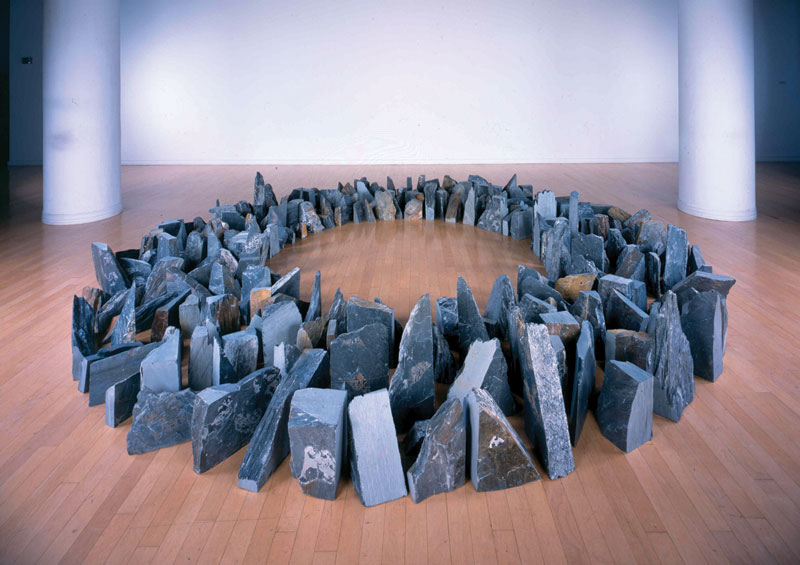This exhibition gathers work by artists who address concepts of space and place. Drawn entirely from the Modern’s permanent collection, the exhibition includes paintings, photographs, drawings, and videos by artists from the United States, Europe, Asia, and Mexico. The categories of space and place are broadly conceived, encompassing nature, the city, environment, geography, and atmosphere, as well as landscapes of the imagination. The sites presented range from natural to man-made, cosmic to microcosmic, real to fictional, and sublime to commonplace, while artistic approaches vary from representation to abstraction, documentary to conceptual. The selection reflects the diverse ways that artists engage space and place to explore questions of identity, memory, gender, history, power, technology, nostalgia, anxiety, or desire.
Richard Long and Hamish Fulton, two central figures of the British Land Art movement that emerged in the late 1960s, have adopted unique strategies of representing their encounters with nature in the interior space of the gallery. Long’s Cornwall Summer Circle, 1995, is composed of stone fragments the artist collected from a walk through the Cornish landscape, while Fulton uses only words and photographs to document his journeys through various terrains. The Great Wall of China forms the backdrop for Marina Abramović’s performance piece The Lovers, 1988/1996, in which Abramović and her former partner, the artist Ulay, walked more than a thousand miles from opposite sides of the wall to meet in the middle.
Darker aspects of place are confronted in Donald Sultan’s depiction of a disused industrial plant built up of molten tar, plaster, and paint. In Quaternity, 1973, Anselm Kiefer presents the interior of his then-studio, a converted schoolhouse attic, as a space to reflect on metaphysical questions of spirituality, myth, and Germany’s troubled history following World War II.
The colorful, pointillist-style surfaces of Nancy Graves’s paintings combine abstraction and naturalism, suggesting satellite maps or topographical diagrams of the ocean floor. Inside-Outside, 1980, Graves’s sculpture of a dismantled camel skeleton, evokes a deconstructed natural history museum display. Graves’s work in both mediums raises questions about how institutions merge truth and artifice in their seemingly authoritative presentations of distant times and places.
Mario García Torres’s video The Schlieren Plot, n.d., is a fictional documentary based on actual places and events. García Torres’s cinematic narrative pays homage to the American sculptor and Land artist Robert Smithson, who worked on two site-specific projects in Texas during the late 1960s and 1970s: a never-realized sculpture commission for the Dallas/Fort Worth Airport and an earthwork in the form of a semicircular dirt mound in Amarillo. Smithson’s original drawings for the DFW Airport project are displayed nearby.
Works by notable artists Dennis Blagg, Julie Bozzi, Mark Bradford, Thomas Demand, Vernon Fisher, Candida Höfer, Alex Katz, Vera Lutter, Sylvia Plimack Mangold, Cindy Sherman, Melanie Smith, Hiroshi Sugimoto, Thomas Struth, and Frank Thiel are also included in this presentation, each relating to space and place in unique ways.






COMMENTS